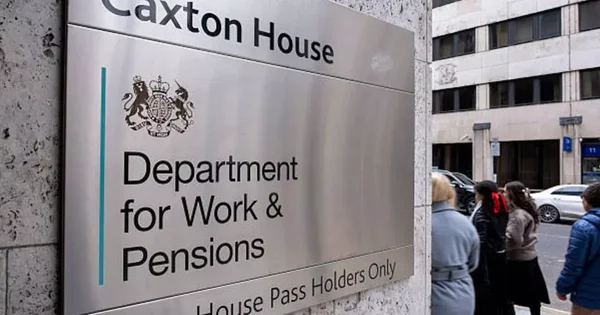Buying property in the UK? Know this
Buying property in the UK? Stamp Duty Land Tax (SDLT) will likely be part of your journey. This tax applies to most property purchases over certain thresholds in England and Northern Ireland.
Stamp Duty is a major cost to budget for and represents a significant tax on home buyers, often impacting the overall financial planning required for purchasing a property.
Understanding when you pay Stamp Duty is essential for budgeting your property purchase correctly. The rules vary depending on whether you’re a first-time buyer, purchasing an additional property, or buying as a company.
The UK’s first personal tax app, Pie tax, includes a Stamp Duty calculator giving you an instant breakdown of what you’ll owe. Or if you’re just here to get to grips with it all, let’s break it down!
What is Stamp Duty Land Tax?
Stamp Duty Land Tax (SDLT) is a tax you pay when buying property or land over certain values in England and Northern Ireland. It’s a chunk of money that goes to the government when you complete your purchase.
In Scotland, stamp duty is called Land and Buildings Transaction Tax (LBTT), and in Wales, it is called Land Transaction Tax (LTT). The buildings transaction tax LBTT is the Scottish equivalent of stamp duty, so 'stamp duty in Scotland' refers to this tax. Similarly, 'stamp duty in Wales' is known as Land Transaction Tax, and 'stamp duty rates LTT' refer to the specific rates and thresholds that apply in Wales. The rules are similar but with different rates and thresholds for each region.
The tax works on a tiered system, meaning you pay different percentages on different portions of the property price. The more expensive the property, the higher the overall tax bill.

When do you pay Stamp Duty?
Stamp Duty becomes payable as soon as you complete your property purchase. This is the moment when the keys are handed over and the property legally becomes yours.
You (or usually your solicitor) must pay the tax to HMRC within 14 days of completion. HM Revenue & Customs (HMRC) is the government authority responsible for collecting stamp duty. This deadline is strict, and missing it can result in penalties and interest charges.
The tax applies when you buy residential property worth more than £250,000, or £425,000 if you’re a first-time buyer eligible for relief. For non-residential property and land, the threshold starts at £150,000. You must pay to HM Revenue as part of the property transaction process.
You’ll need to pay Stamp Duty whether you’re buying with a mortgage or with cash. The full amount must be paid upfront – you can’t spread the cost over time. You must pay any stamp duty due within the deadline, and stamp duty is paid by the buyer.
It is typically the buyer who pays stamp duty, and your solicitor usually handles the process. Stamp duty who pays is almost always the buyer, not the seller.
Current Stamp Duty thresholds
For standard residential purchases, you’ll pay 0% on the first £250,000 of the purchase price. Then 5% on the portion from £250,001 to £925,000. The stamp duty rate increases to 10% on the portion from £925,001 to £1.5 million. Any amount above £1.5 million is charged at 12%. The stamp duty bill is calculated based on the purchase price and the applicable stamp duty rates for each band.
How much stamp duty costs depends on the value of the property you are buying, with higher purchase prices resulting in higher stamp duty bills. The stamp duty you pay will also depend on whether you are a first-time buyer or purchasing an additional property. Much is stamp duty? The current rates and thresholds are set by the government and can change, so always check the latest figures.
First-time buyers get a better deal, with no Stamp Duty on the first £425,000. This is known as first time buyer stamp, and eligible buyers can benefit from buyer stamp duty relief, which means they pay 5% on the portion from £425,001 to £625,000, but only for properties worth up to £625,000. First time buyer relief and stamp duty relief can reduce or even eliminate the stamp duty bill for eligible buyers, depending on the purchase price. Time buyer stamp duty relief directly affects the amount payable, making it more affordable for those entering the property market for the first time.
These thresholds can change following government Budgets. I remember when the threshold temporarily increased during the pandemic, saving my sister nearly £5,000 on her house purchase.

Stamp Duty exemptions and reliefs
First-time buyers can save up to £11,250 in Stamp Duty thanks to the special relief. This applies to properties up to £625,000. Some buyers are exempt from paying stamp duty or exempt from stamp duty if the property value is below a certain threshold, or if the property type qualifies, such as certain mobile homes or environmentally friendly new builds.
Stamp duty exceptions include transfers between spouses during divorce or separation, properties under the minimum price threshold, and some business or charitable transactions. No Stamp Duty is payable when property is transferred between spouses during divorce or separation. This provides a small financial relief during a difficult time.
If you’re buying multiple properties in a single transaction, you might qualify for Multiple Dwellings Relief. This could reduce your tax bill significantly. Exemptions and reliefs may apply to a home mover or buying multiple properties, so it’s important to check your eligibility.
How to pay Stamp Duty
Most people never actually handle the Stamp Duty payment themselves. Your solicitor or conveyancer typically manages this process for you.
They’ll calculate the correct amount and complete the Stamp Duty Land Tax return. They’ll then submit it to HMRC and make the payment using money you’ve already transferred to them. While some buyers hope to add stamp duty to their mortgage, this is generally not possible and the tax must be paid upfront.
If you prefer to handle it yourself, you can file the return and pay directly through the HMRC website. Most people find it easier to let their legal representative take care of it.
Remember that payment must reach HMRC within 14 days of completion. Missing this deadline means penalties starting at £100 for returns up to 3 months late.

Final Thoughts
Stamp Duty is an unavoidable part of buying property in England and Northern Ireland. Understanding when it's due and how much you'll pay helps you budget accurately.
Always factor SDLT into your overall buying costs. Include it alongside solicitor fees, surveys, and moving expenses.
With the 14-day payment deadline, having funds ready is essential. If your situation is complex, seeking professional advice could help identify potential reliefs.
Pie tax: Simplifying Stamp Duty Tax
Navigating Stamp Duty doesn't need to be stressful with the right support in your pocket. The UK's first personal tax app, Pie tax, offers real-time calculations that instantly show how much Stamp Duty you'll owe.
Our property purchase assistant guides you through the entire process. We provide automated SDLT return preparation that ensures you meet the critical 14-day filing deadline.
We'll flag potential reliefs you might qualify for, potentially saving you thousands. The app also stores all your property tax documents securely in one place for future reference.
Want to see how it works? Take a peek at the Pie app and see how we're making property tax simpler.









